|
|
|
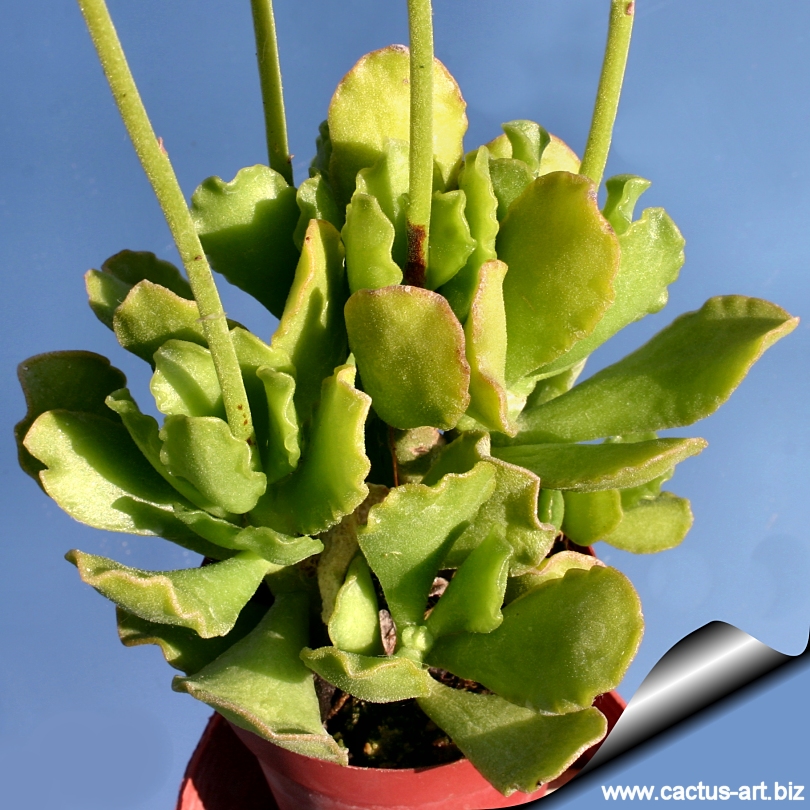
Adromischus cristatus var. zeyherii
It is one of the commonest grown and a very
vigorous grower, that does not mind shady conditions.
It is also very tolerant of abuse,
|
|
Description: This is a
dwarf succulent that forms groups of stems. The “zeyheri”
is a light-green form of A. cristatus which is
distinguishable by its lack of aerial roots, and with glandular hairs on
the leaves, inflorescences and flowers.
This variety and var. mzimvubuensis look quite similar at
first glance but this plant has felted leaves covered with fine
glandular hairs whereas Adromischus cristatus var. zeyheri
has completely smooth (glabrous) leaves.
Stems: up to 8 cm long, knobbly, not
very branched and without aerial roots.
Roots: Fibrous roots.
Leaves: Larger in comparison to the type species light green
not mottled, waxy, flattened, oblong about 4-7 cm long and
2,2-5,5 cm wide, widely triangular, waved/crimped at the margin.
Flowers: Very small, sessile, white-cream
on a 25-60 cm tall inflorescence.
Blooming season: Mid summer.
Fruit: Fruit a dry many seeded follicle.
NOTE: Also separated from A. cristatus var. cristatus are varieties
clavifolius, mzimvubuensis and schonlandii.
|
|
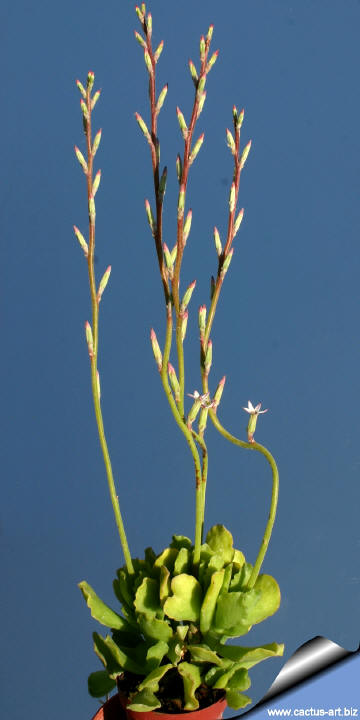 |
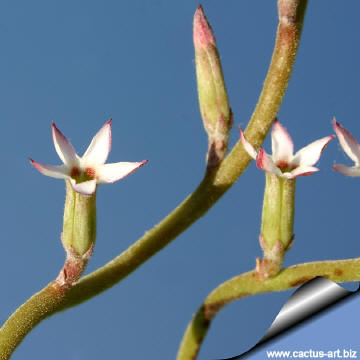 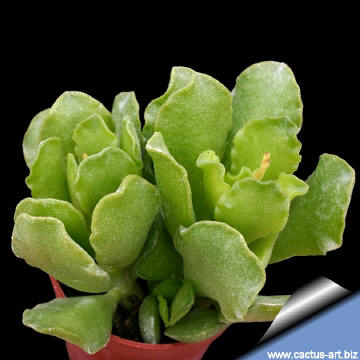 |
|
. |
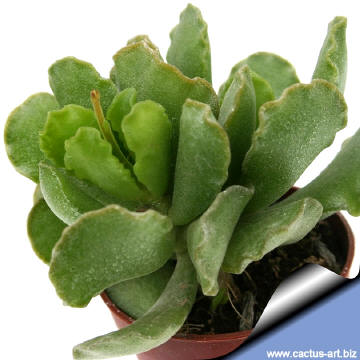 |
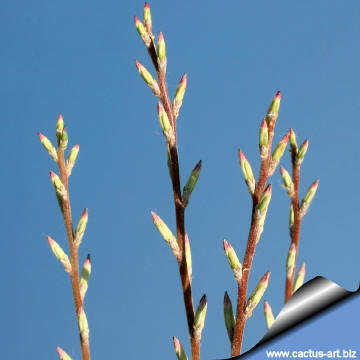 |
|
Advertising
|
|
|
|
|
|
|
Family: Crassulaceae (Stonecrop
Family)
Scientific name: Adromischus cristatus
var. zeyheri
(Harvey) Tölken
In: BT 12(3):390, 1978
Section: 5 Longipedunculati
Origin: Endemic from a small area in the Baviaanskloof (Table Mountain Group in
the Eastern Cape). The old type locality is Kenko River.
Habitat: Grows in leaf litter on quartzitic sandstones in the shade of
thicket vegetation on a steep slope (intergrading with the typical
variety).
Common Names include:
Crinkle Leaf Plant
Synonyms:
- Adromiscus zeyheri (Harv.) Poelln. 1938
- Cotyledon zeyheri Harv. 1862
- Adromischus cristatus (Haw.) Lem.
Etymology: Named after Karl [Carl] LP Zeyher (1799- 1858), German naturalist
and botanical explorer in South Africa from 1822.
|
|
|
|
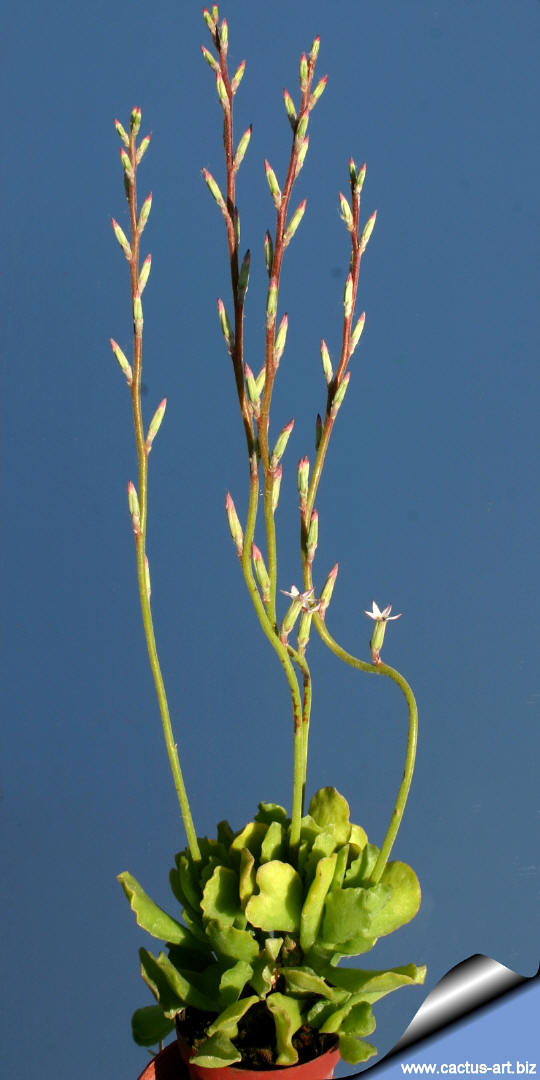
Cultivation:
They prefer well-drained soil in a partially shaded position and require
a minimum temperature 5°C (But hardy down to -7°C for short periods),
with good drainage and dryness in winter to resist the cold. Let the
soil dry between soaking, in the wild, it receives rain mostly in spring
and fall. Must have very dry atmosphere. They are vulnerable to
mealybugs
and rarely
scale. It
is prone to rotting from the tuberous base or from dried inflorescences.
As the plant matures, the centre becomes bare. When it does, restart it
from side cuttings and throw away the central part.
Propagation:
Usually propagate from single leaves (leaf
cuttings)
or stem cuttings seed propagation is rarely used.
Twist off a leaf and permit it to dry out a couple of days, lay
it on the soil and insert the stem end partially into the soil. The
original leaf should not be removed until it has dried up. Try to keep
the leaf somewhat upright so that the roots are able to grow downward.
If grown in a container, bottom watering by immersing the container is
recommended.


|
|